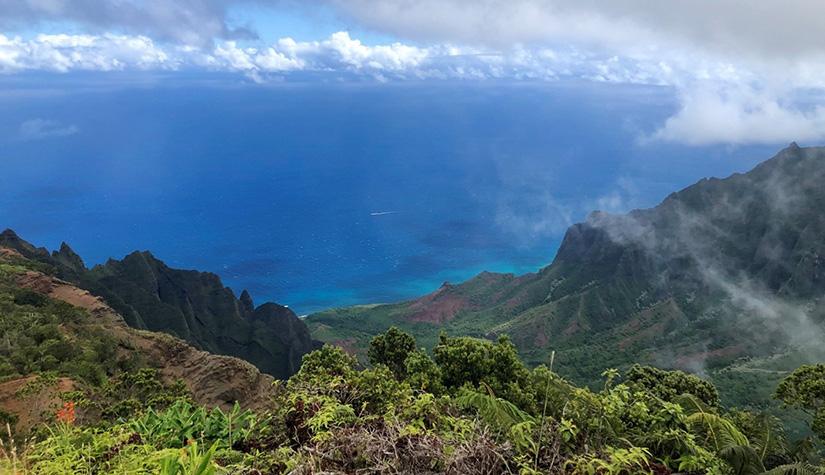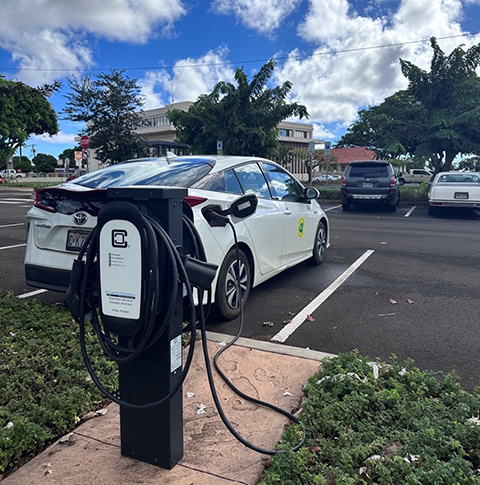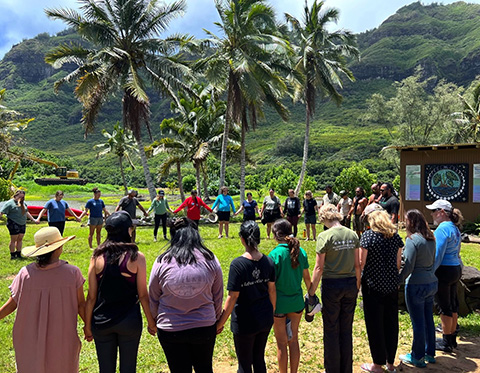Kauai Partners With NREL To Explore Sustainable Transportation Options
March 5, 2024 by Sarah Meehan
This blog post is part of NREL’s series of community spotlights for the Energy Transitions Initiative Partnership Project (ETIPP).
ETIPP is managed by NREL and draws on a network of national laboratories and regional partners organizations to provide technical assistance to island and remote communities to help improve their energy resilience.

At any given time, Kauai typically has about 20,000 to 30,000 visitors—about one for every three residents—on the island. And most of them travel in rented vehicles. As Kauai works to reduce its reliance on cars and fossil fuels, the island partnered with ETIPP to assess the viability of alternative transportation options for tourists.

In line with Hawaii’s goal to be a net-negative carbon emitter by 2045, Kauai aims to eliminate fossil fuel use in ground transportation by that time. Through ETIPP, the community sought to better understand how to make transportation safer for residents and visitors, find ways to move people rather than cars, and electrify transportation—measures it hopes will improve disaster, economic, and energy resilience.
“Our transportation system and tourism-centered economy are overly dependent on automobiles and petroleum fuels, which create several key resilience challenges,” said Christina Kaser, energy coordinator for the County of Kauai’s Office of Economic Development. “Although energy resilience and greenhouse gas reduction are important aspects of our efforts, our primary objective in transforming our ground transportation system on the island is to create a healthier, more prosperous and resilient community and to improve the quality of life for our residents.”
Researchers at NREL and Lawrence Berkeley National Laboratory helped Kauai understand steps that could help get people out of single-occupancy vehicles, and how to improve the viability and appeal of electric vehicles (EVs). The labs studied mobility data for the island to understand where people start and end their days; analyzed multi-modal transportation options, including where they would best fit on Kauai, and how they could best serve different types of travelers; and assessed how the island could build out its public EV-charging infrastructure to meet its clean ground transportation goal.
“It's kind of a hard problem to solve because the island residents do require tourism for driving the economy,” said NREL researcher Yanbo Ge. “At the same time, they would also like to have as little traffic as possible in order to keep the island safe and clean, in order to keep the roads uncongested, et cetera. So, it's kind of a double-edged sword.”
The research team deployed a questionnaire that elicited more than 1,000 responses from residents and visitors to understand why people choose certain transportation modes and what factors would cause them to choose other options. Results showed that if there were enough alternatives to driving, residents and visitors would often be willing to use them instead.

“One of the coolest things we’ve been able to do is show that availability of options will lead to a change in behavior,” Ge said. “To presuppose that people want to stick to their own vehicles is not a good place to start if you want them to change.”
Findings from Kauai’s ETIPP project have already been used to support mobility hub planning and decision-making around airport rental car facilities. And Kaser expects the relationship between land use and multimodal transportation to be a key component of updates to the East Kauai Community and Circulation Plan.
“We had a lot of great resources and studies come out of ETIPP, and I really want to make sure they are in stakeholder and community hands and don’t end up getting dusty on government shelves,” Kaser said. “Kauai is doing a ton of work around mode shift and electrification in county, state, and private sectors, and ETIPP has been a catalyst for some [projects] and also validated others that were already happening.”
For more community spotlights and achievements, see ETIPP’s 2023 Annual Report.
Share
